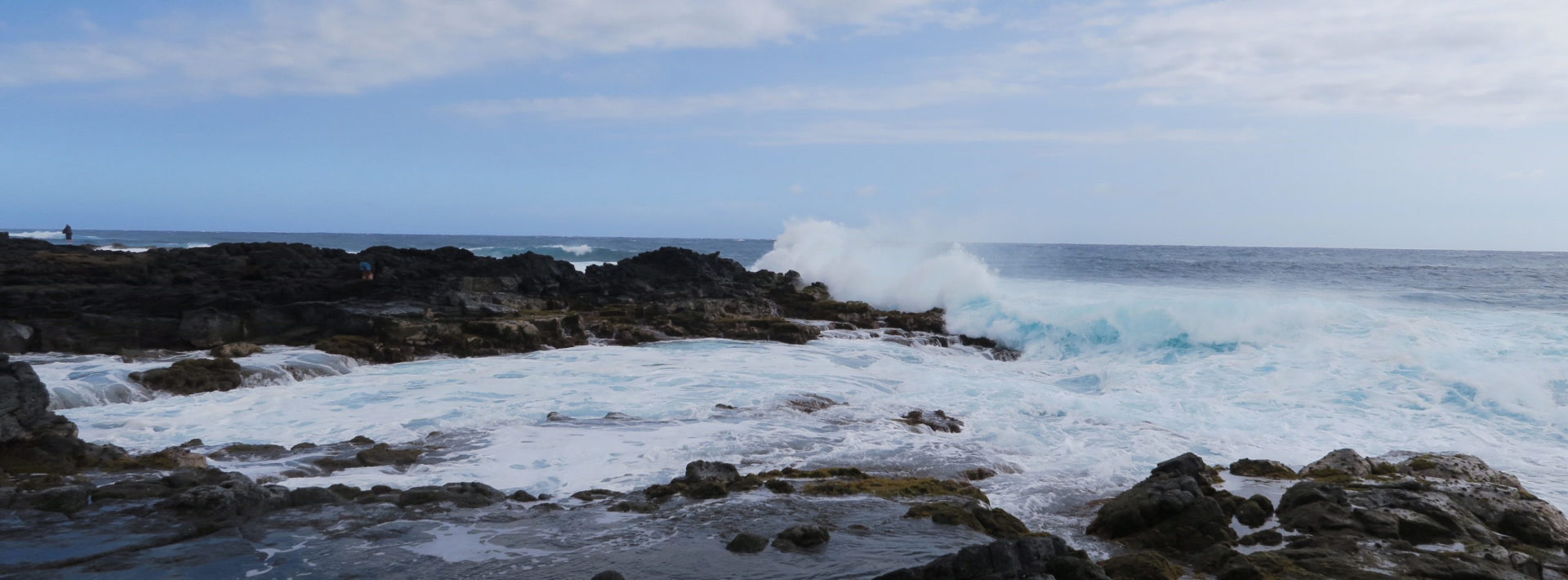TREX 2018 Day 8: Retrievers

By Joey Noszek ’20
Yesterday, the other group placed particle sensors around the island from Pahala to Kona. Today, we had to retrieve them. We would have preferred to have the sensors collect data for longer than one day. However, we go to the north of the island tomorrow and the government shutdown delayed us. So we were limited to only one day of collection.
Before we left, Chang used zip ties to attach a particle sensor and an SO2 sensor to the roof of our car. These sensors would record data as we went on our excursion. Once the sensors were mounted, Ju, Chang, TA Josh, and I got into the car and left. We first went to Pahala, but nobody knew the combination of the air quality station lock. This error allowed Josh to realize that we should retrieve the farthest sensor first and collect sensors on our way back. This would maximize the amount of data that we recorded. Then, we went on our way to Kona.

The sensors on the roof
Kona was much warmer and sunnier than the southern part of the island. Also the vog was quite present. We collected our two farthest sensors from a fire station and turned back to pick up sensors. On the way, we stopped at South Point to give our roof-mounted sensors clean air data as a background. We also left the car to go as far south as we could possibly go this time. Afterward, we finished getting sensors and returned to the house for dinner.

After dinner, we analyzed the data. While we did not get very far in the two hours that we had, we were able to see that our results were interesting. I was able to show that particulate matter increases as one goes northeast toward Kona. This is what is expected as Kilauea releases SO2. SO2 is not particulate matter. However, as it moves away from the volcano and toward Kona, chemical reactions transform the SO2 into H2SO4, sulfuric acid, which is detected by particulate matter sensors. When we go north, we will really get into analyzing the data.
Every year, a group of MIT students and professors travel to the Big Island of Hawaii to gain fieldwork experience through TREX (Traveling Research Environmental EXperiences). The first TREX trip was held in 2000, and since launching has taken students on research activities in domestic and international settings. For more undergraduate opportunities, click here.



